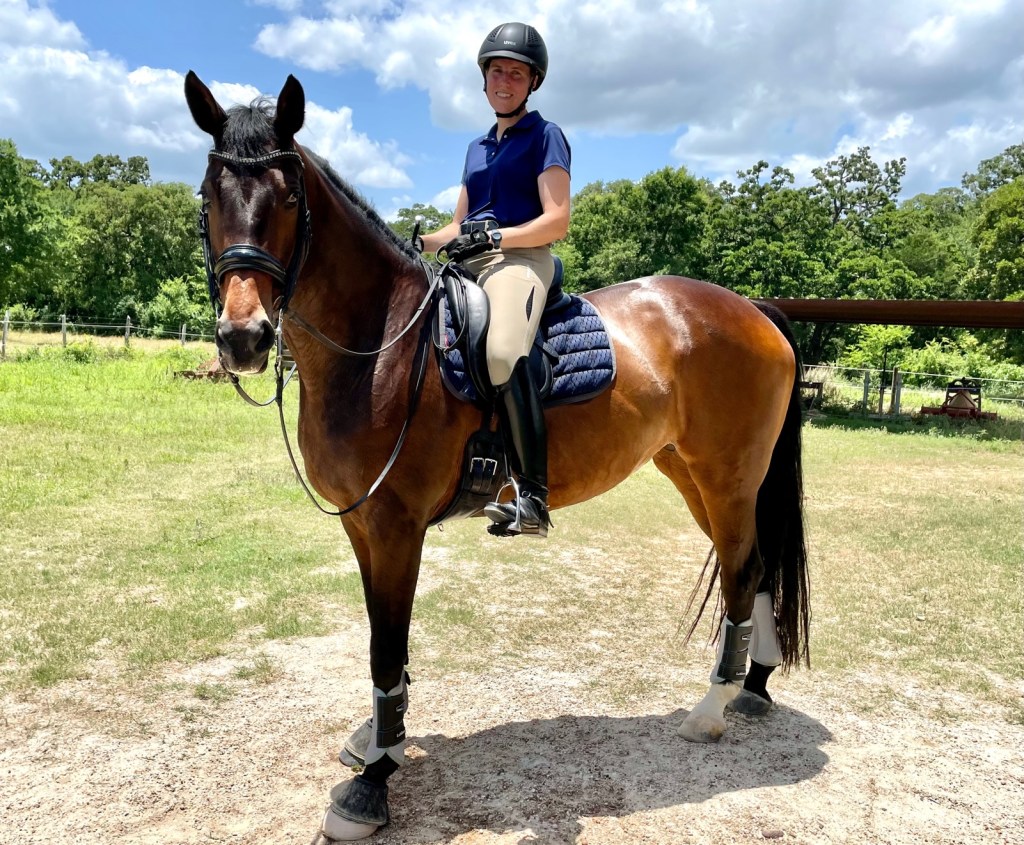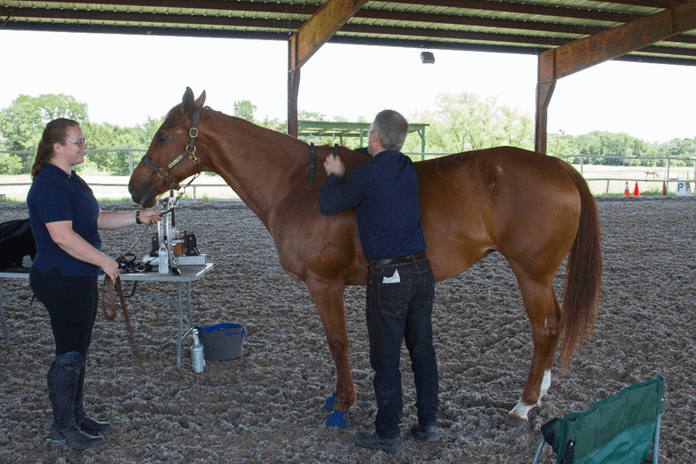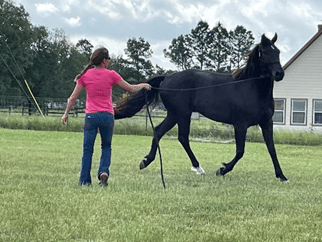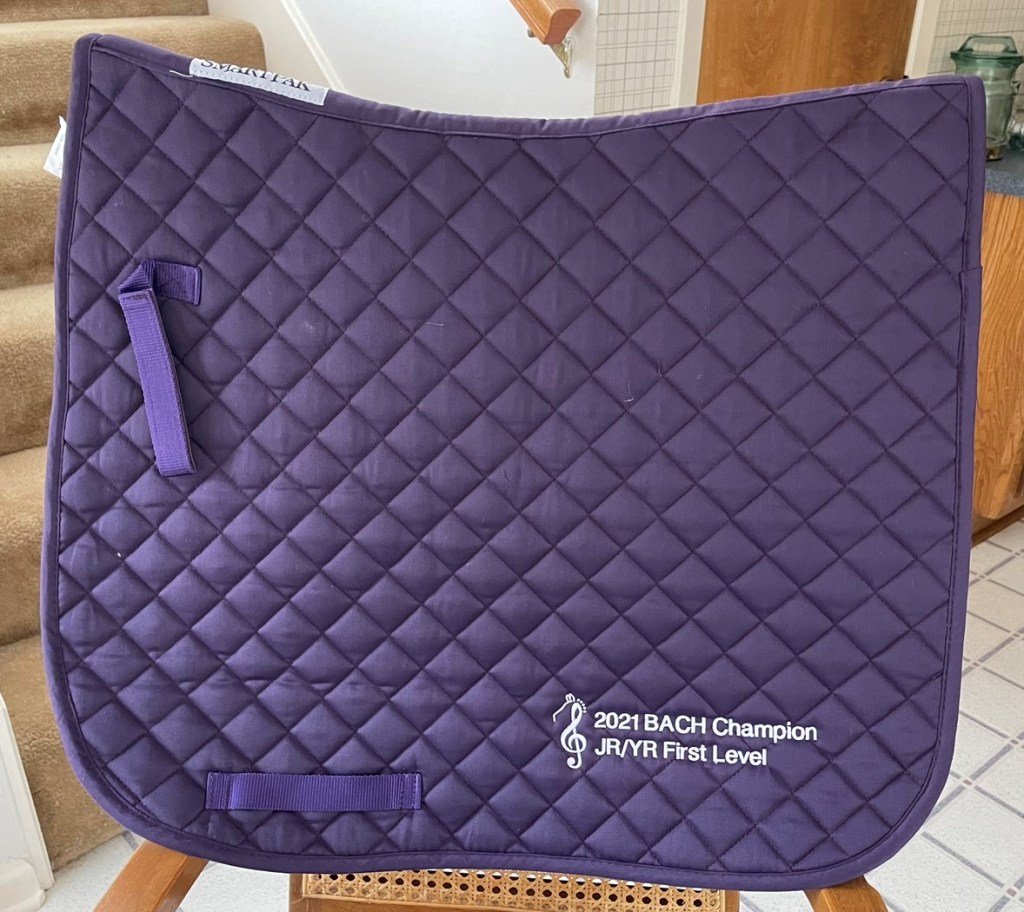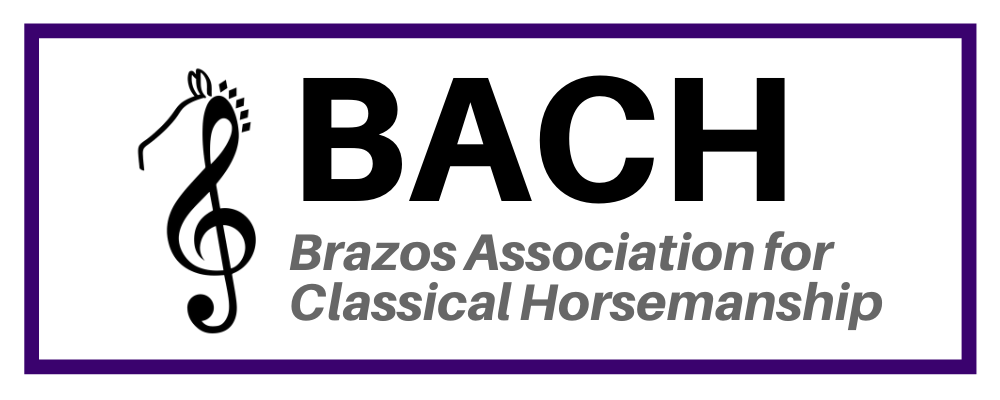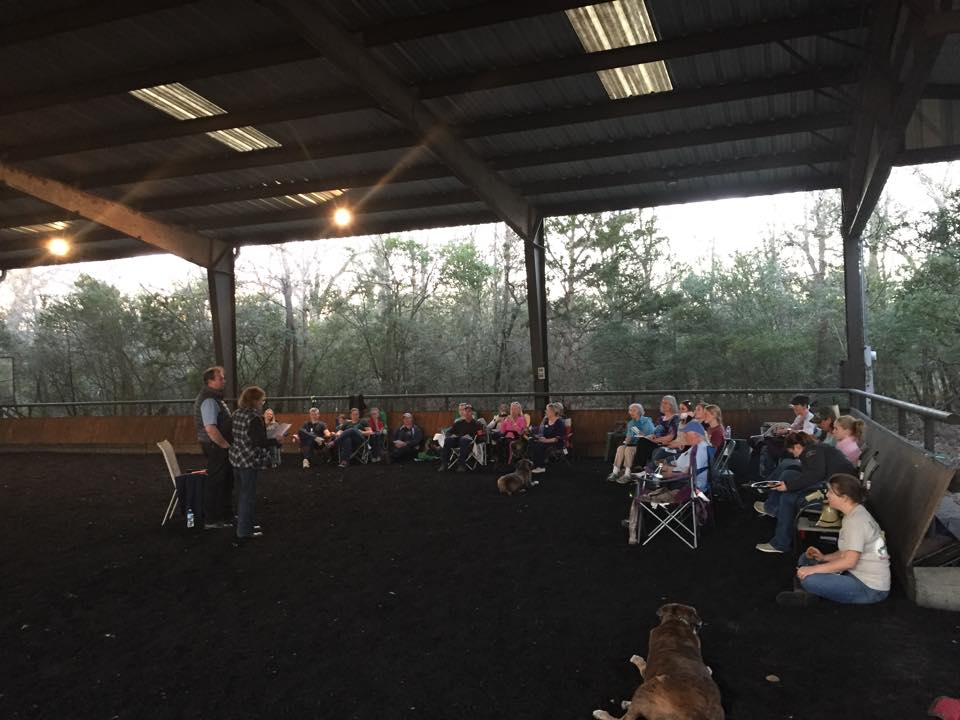By McKenzie Mull
This past month, members of BACH, along with those from the South Florida Dressage Association, had the pleasure of learning all about equine nutrition from Texas A&M’s own Dr. Sarah White-Springer.
The lecture started off with a basic overview of an equine’s digestive system – not quite ruminant, not quite monogastric (as we all know, horses are special!). The equine stomach produces acid 24/7, which isn’t an issue for those with a lifestyle of continuous grazing; however, this can be problematic and ulcer-causing when horses receive their meals in a few large rations, as the stomach is most efficient at half-capacity (or roughly 2 gallons).
This is why Dr. White-Springer recommended basing all equine diets off of forage first, to provide a quality source of fiber and optimal gut health. She also noted the importance of knowing the nutritional value of the type of forage you are feeding. For example, protein levels vary widely between alfalfa (~18% protein) and coastal bermuda (~9% protein).
On the topic of grains or concentrate feeds, she noted that each horse has different nutritional needs, depending on their age, breed, workload, living situation, and individual genetics, among other factors. Some horses may not need grain at all, if provided sufficient access to quality forage or pasture, while the traditional “hard-keepers” may need additional calories/energy to maintain sufficient weight. Others may just need a ration-balancer to provide them with vitamins and minerals, but not too many calories. One of my key takeaways from this lecture was that horses do not need high levels of protein in their grain (10-12% is enough), unless they are in growth stages, lactating, or in moderate to heavy work. Too much protein in the diet may cause high volumes of urination with a strong ammonia smell, and associated kidney issues.
As we head into the heat of the Texas summer, Dr. White-Springer stressed the importance of access to electrolytes and water. Since electrolytes cannot be stored in the body, she suggests feeding them in the evening to help your horse’s body recover from the heat of the day. Fresh, clean water should be available to them at all times, as horses have no chemical “signal” to tell them they are thirsty.
Believe it or not, this is just a glimpse of all the great information Dr. White-Springer talked about with our group. But don’t just take my word for it – hear it from Dr. White-Springer herself! A recorded version of this lecture is available here:
Zoom Recording of Equine Nutrition Lecture
Passcode: rXJ$+r?0
More About Our Dr. Sarah White-Springer
Dr. Sarah White-Springer is an Assistant Professor of Equine Physiology at Texas A&M University. Upon culmination of her PhD program at the University of Florida, Dr. White-Springer completed postdoctoral training at the University of Kentucky focused on human and murine models of muscle disease. Dr. White-Springer’s main passion is improving performance and wellbeing in equine athletes with an emphasis on precision management to optimize nutrition, training, and management for individual horses. Relationships developed with the Thoroughbred industry have afforded Dr. White-Springer the opportunity to work with elite racehorses, including offspring from notable sires such as American Pharoah and California Chrome. Dr. White-Springer has also formed collaborations investigating skeletal muscle energetics in cattle and swine production, and in an ovine model of human hypophosphatasia. In addition to her academic pursuits, Dr. White-Springer is an avid equestrienne, having received over 50 National and Regional titles with her own Arabian horses, Amira and Khody.

